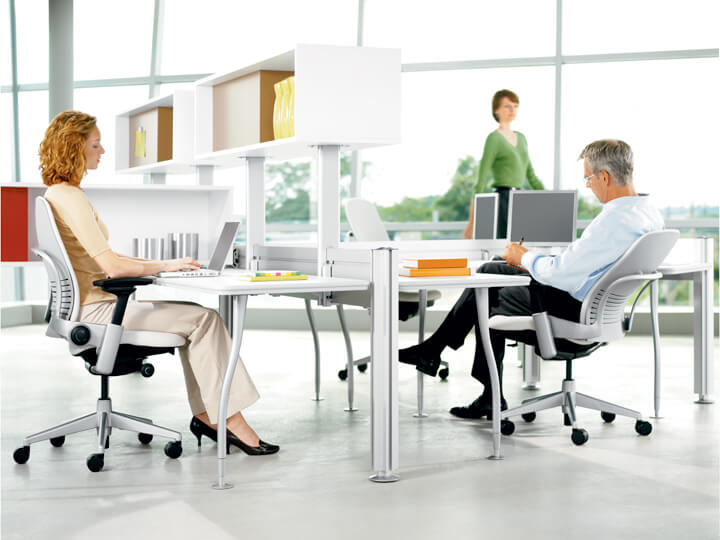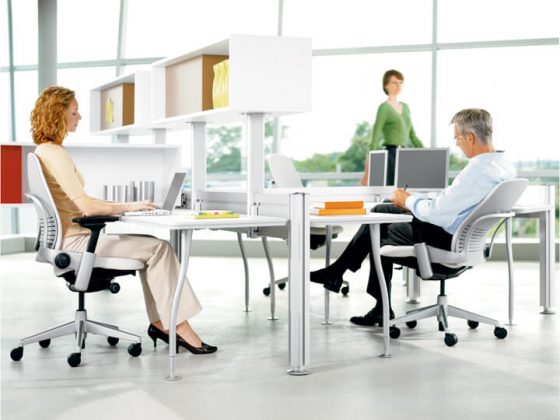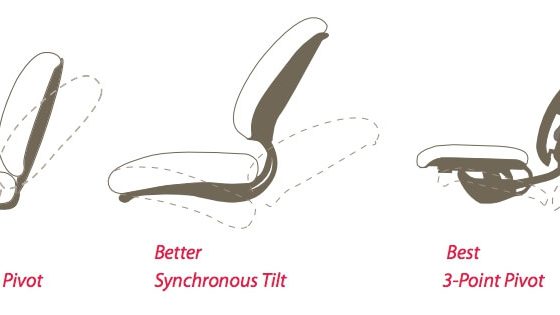Every year thousands of people receive compensation for some form of injury that occurred while on the job. Not only that, but the cost of these injuries to company productivity and overall output can be staggering. In 2004 alone 56 billion dollars was paid aid in relation to workplace injuries. Further, in 2005 workers spent over 80 million days off of the job as a result of some injury or another.
For any business, it is important to minimize as many of these injuries as possible. Often, that means using the right equipment. In the case of office workers, that means utilizing the correct chair. The average office employee can expect to spend an average of 8 hours per day in a chair. If this is not an ergonomically designed chair it can easily lead to some form of repetitive stress injury. It is of course completely understandable when safety experts agree that the correct chair is the most important piece of equipment in many workplaces.
The Impact of the Correct Ergonomic Office Chair
The correct ergonomic chair can not only reduce potential damage, but when coupled with specific training, it can also increase worker output. Studies indicate that an adjustable chair combined with ergonomic training let to a reduction in orthopedic damage. Further research from the University of Southern California found that worker productivity could be increased as much as 17.5% by simply providing workers with the right chair and training.
These are things that should be self-evident. While many employers seek to cut material costs by using cheaply manufactured goods, this is actually damaging in the long run. Statistics don’t lie. Time after time research points to quality ergonomic chairs as being one of the key differences between happy, productive workers, and costly workers compensation claims.
The right ergonomic chair with the proper ergonomic training can help reduce injuries.
Studies also show that work-related injuries can be reduced and productivity increased using an ergonomic chair and proper ergonomic training:
• “A highly adjustable chair coupled with office ergonomics training reduced musculoskeletal symptom growth over the workday.”
• In 1990, research found a 17.5% productivity increase in subjects working in an ergonomically optimal setting compared to one which was ergonomically suboptimal.
• In 2003, research found a 17.7% productivity increase in participants that received a highly adjustable chair and office ergonomics training.
All together, these statistics and studies reveal that ergonomic seating is something all employers should consider for their office staff. With ergonomic chairs, we can help improve comfort, support, and productivity in the office.
Benefits of Using Office Ergonomics
There are many benefits to using ergonomic practices at work. By using ergonomics, you can reduce issues with pain and keep workers more comfortable when they are working.
Reduction in Costs
When you invest in ergonomic strategies for the office you will reduce instances of MSDs. OSHA or the Occupational Safety and Health Administration indicates that almost $1 billion per week is paid out by U.S. employers for worker’s compensation costs. This includes medical expenses, workers’ compensation payments, and legal service fees. There are also some indirect costs such as lost productivity, accident investigation, corrective measures, absenteeism, and training replacement employees. The indirect costs according to OSHA can be around 20 times those of the direct costs
We refer to MSDs as disorders of the musculoskeletal system. When you have poor posture or repetitive motion, these conditions are more common and they are the most common injury in the workplace environment. MSD examples include back sprains, back spasms, tendinitis, rotator cuff injuries, carpal tunnel syndrome, neck problems, and epicondylitis. The Bureau of Labor Statistics reported in 2015 that MSD accounted for 31% of the worker’s compensation claims.
MSDs occur when the employee can’t meet the physical requirements of the job. The leading cause of these MSDS includes forceful motions, poor positioning, long periods in a static position and other repetitive activities. The conditions and their costs can be reduced by using the correct ergonomic equipment in the office. Workstations can be redesigned and the workflow can be improved.
An employee may require long term medical care, legal services, and time off of work. Rehabilitation services, surgical interventions, and adaptive equipment are all examples of long-term medical care. There can be rising insurance premiums so medical expenses have a large impact on the bottom line of the employer.
Injured employees often have to miss work until the condition improves or is resolved enough for them to work again. An employee needs to pay worker’s compensation payments and may need to train replacement workers while the employee is off the job. There may be reduced productivity as a result and the employer may lose revenues.
A worker’s compensation case can require accident investigation services or legal expenses. There are premium rates which can make the services costly as some injuries take a long time to heal. A case may take six months or even a year before it resolves. An employer could be asked to pay a large financial settlement when there is a chronic disability. When ergonomics are used in the workplace you have reduced risks of employees sustaining an injury.
More Productivity
You spend a lot of time in your office chair. You will be more productive when you have a healthy environment and are comfortable during the day. When you use office ergonomics, productivity is increased. A workspace that is ergonomic can promote less repetitive motions, fix posture, make things easier for each and cause less physical exertion for the employee. When there is more efficiency, there is more productivity.
A good ergonomic chair will accommodate workstyle, various activities, and different body types. When you have an ergonomic chair that has the right adjustments toy can work for longer periods and still remain comfortable. You will be in the best position to remain comfortable and you will have fewer pain issues or soreness so you can work at your full capacity.
More Employee Engagement
You will have less turnover, better morale, less absenteeism, and more involvement of employees when you use office ergonomics. An employee will want to work there because they are being taken care off by the employer.
Promotes Safety
The workplace will develop a safety culture and employees will know you are looking after them as they work. When you commit to health and safety you put your employees first and this is a good business practice to have. You may attract new employees as a result of your commitment to safety.



1 comment